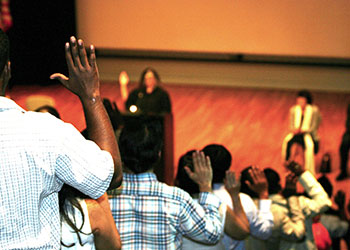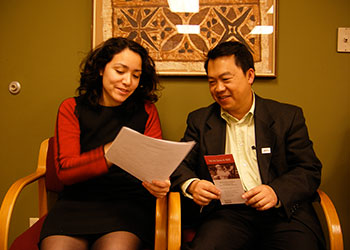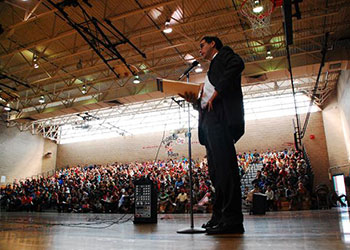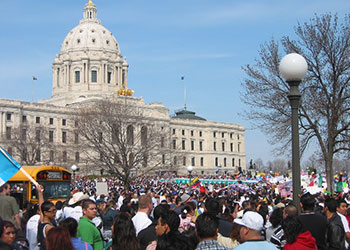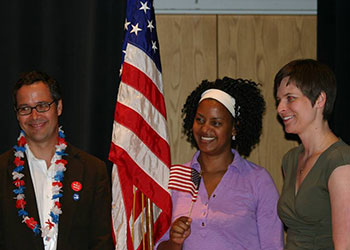Historical perspective on Dream Act proposals, and why this time might be different.
Archives
DACA ending, battle for DREAMers moves to Congress
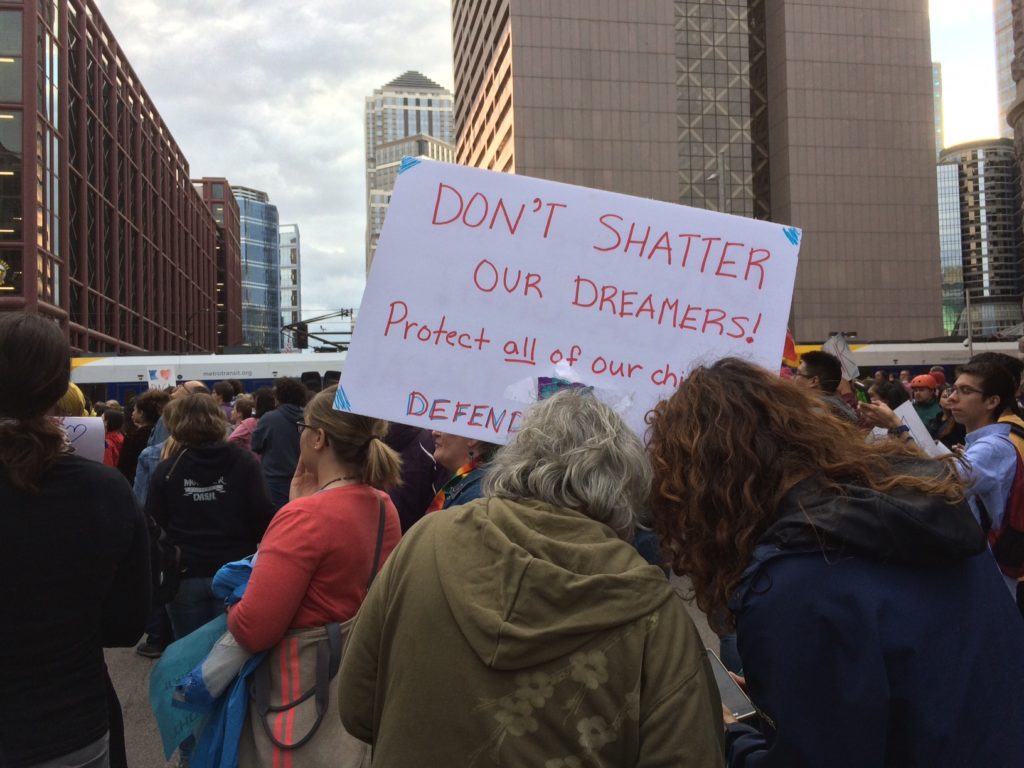
On September 5, Attorney General Jeff Sessions announced an end to DACA, turning away more than 800,000 young immigrants. Besides the blow to Minnesota and the United States, ending DACA threatens to send young people back to countries they barely know, uprooting them from families, children and the communities in which they grew up.
In Minnesota alone, Trump’s order devastates more than 6,200 young people – all of whom have or will have a high school diploma, are in or graduated from college, or are working in jobs that pay them better because they have DACA. All of them arrived in this country at age 15 or younger and consider Minnesota their home. ILCM and NavigateMN programs have worked together to support and assist thousands of DACA applicants between the ages of 15 and 35 from every Congressional District and from dozens of countries.
The state of Minnesota is currently experiencing historic waves of older workers leaving the workforce. According to the Humphrey Institute and Greater MSP’s January 23, 2017 report, Minnesota needs to expand the rate of immigration to Minnesota four and one-half times to maintain our current economic standard of living.
Minnesotans with DACA pay $15 million in state and local taxes. According to the Center for American Progress, ending DACA would cost Minnesota more than $367 million in annual GDP losses. Nationally, the loss of DACA would cost the country $460 billion over the next decade. Even the conservative CATO institute supports continuing DACA and warns of a loss of almost $350 billion over the next decade if DACA is ended.
Americans want these young Dreamers to stay. National polls of registered voters show 78 percent of voters support giving DREAMers a chance to stay permanently, including 73 percent of Trump voters. Businesses in Minnesota and nationally also support permanent protection for DREAMers including Best Buy, Microsoft, Apple, Amazon, General Motors, Google, Starbucks and Visa among many others.
The Trump administration’s abolition of DACA will begin taking away status from DACA recipients as soon as early March 2018, making them vulnerable to deportation. Congress has an opportunity to reverse this decision, and offer permanent protection to the DREAMers. DREAM Act bills with bipartisan sponsorship have been introduced in both the House and Senate.
Minnesota’s Congressional delegation can lead the way by showing bipartisan unity in demonstrating leadership to pass permanent protection for our DREAMers. The delegation is split, mostly along partisan lines – Supporting DACA and Dreamers, opposing Trump decision: DFL Senators Al Franken and Amy Klobuchar, DFL Congressmembers Keith Ellison, Betty McCollum, Tim Walz, Collin Peterson and Rick Nolan all support DACA and Dreamers. Republican Congressmenbers Tom Emmer and Jason Lewis support the administration’s action to abolish DACA. Republican Congressman Erik Paulsen falls somewhere in the middle, saying he supports DREAMers, but not clearly supporting the DREAM Act.
We urge every person, business, faith community, school, and organization who cares about these young people – and who cares about what they bring to our state and nation – to contact your Congressional representatives and demand that they pass the Dream Act before then, and give these young people permanent protection and a path to citizenship.
Q&A on new project: Dual citizenship / Doble nacionalidad
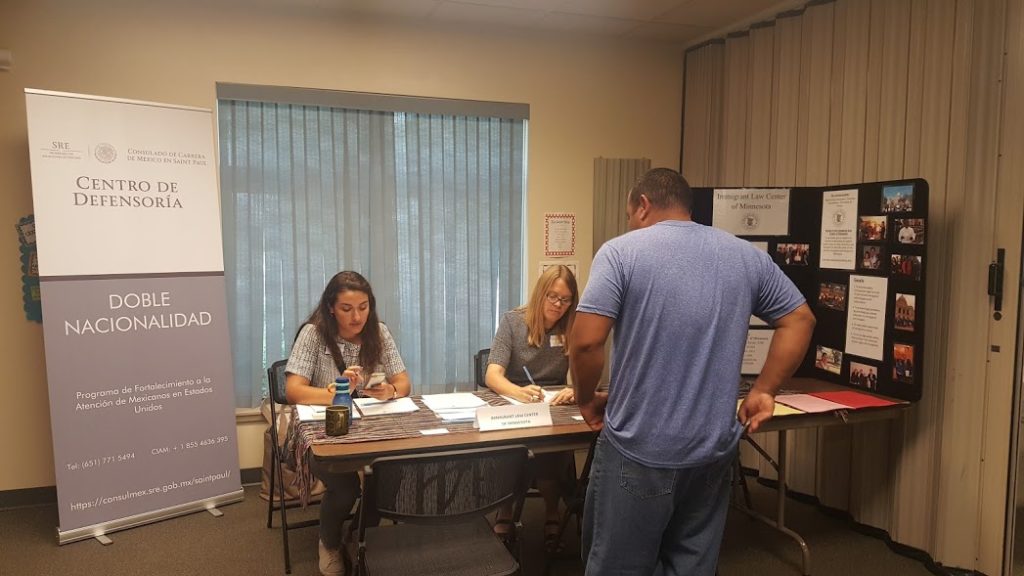
Can you be a citizen of two countries? Absolutely! That’s the message at workshops with dual sponsorship: the Immigrant Law Center of Minnesota and the Mexican Consulate in Minnesota. ILCM’s part in this project is to provide information on becoming a U.S. citizen and to offer screening and assistance to people who want to become U.S. citizens. Blanca Sánchez Rangil, a 2017 Macalester grad working as a legal assistant at ILCM, answered questions about the project:
What is the Dual Citizenship project?
ILCM is doing ten workshops at the Mexican consulate or with the mobile Mexican consulate in Minnesota, Wisconsin, North Dakota, and South Dakota – that’s the first part.
The second part is to help Mexican permanent residents to apply for U.S. citizenship.
What are these workshops?
They are basically talks about what citizenship is, the requirements for applying for U.S. citizenship, the advantages, and the process. We just talk briefly about those things. Then the people at the event come talk to us and we do a short screening for eligibility for naturalization. Then I talk to my supervisors back at the office to see if we can help these people.
So it’s a short presentation and the rest of the time talking to the people to see if they qualify.
What is the mobile consulate?
The Mexican consulate in St. Paul tours Minnesota, Wisconsin, North and South Dakota because that’s the area that they serve. They bring equipment and staff to different places for Mexican who live there to renew their passports or get what they call a matricula consular – an identity card.
How can immigrants qualify for U.S. citizenship?
You can apply for citizenship when you are a permanent resident in the United States and have been a permanent resident for 5 years (or 3 years if you are married to a U.S. citizen), and if you don’t have serious past convictions or a problematic immigration history.
What do you tell people are the advantages of citizenship?
They can no longer be deported; they can travel in and out of the U.S. as many times as they want; they can vote in U.S. elections; they can petition for visas for family members – parents, children, siblings.
Why would people not become citizens?
Some people wait if they don’t speak English and they think they can’t learn it. There are a few exceptions when you don’t need to take the test and interview in English but can do it in your native language. If you are 50 years old at least and have been a U.S. legal resident for 15 years, or if you are older than 65, you can get a simplified test.
What do people need to do to become citizens?
They need to complete the application for naturalization – it’s called N-400. There’s a $725 fee. They might be able get a fee waiver if they have a low income.
Then they will receive a notice to get biometrics – fingerprints and photo. In the process of approving the application, they do an FBI background check and also an immigration records check.
After that, they’ll have an interview with an immigration officer. The officer asks them questions about their application.
They also need to take a U.S. civics test. After that, the officer can either recommend for approval or take more time to review the application and think about it.
If the application is approved, they get an notice to attend an oath ceremony. There, they are asked a few more questions about their application and they take the oath of allegiance and they become citizens.
Why do you think this program is important?
I think that having free services for people who qualify and knowing how beneficial it is for most of them to become citizens is very important.
Ojoye Akane: Connecting families, faith and homes
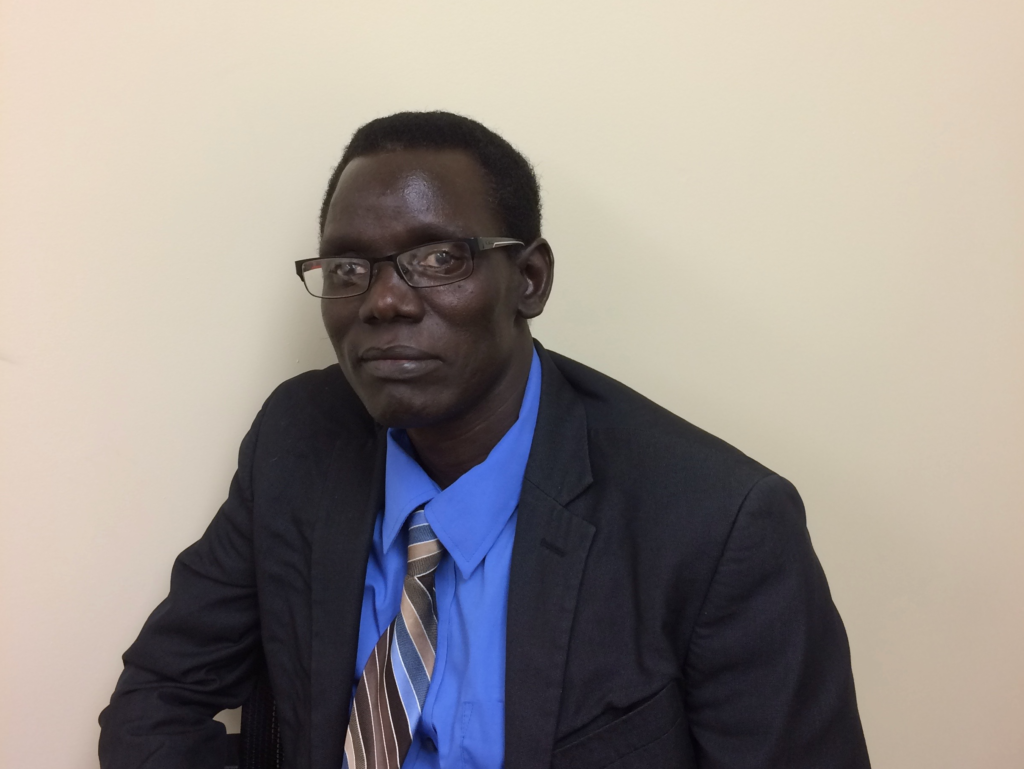
Delivering counseling and education on home ownership, Ojoye Akane travels from Faribault to Rochester to Albert Lea to Austin. He logs a lot of miles in his work for Three Rivers Community Action, but his travel around southern Minnesota is easy compared to the longer life journey that brought him here. That journey contributes to the passion that inspires his work with families and their homes.
Akane grew up in Ethiopia, an orphan raised by “multiple people,” including a grandma and two uncles. “Maybe that shaped my personality,” he says. “If you feel connected with a family, even if you don’t have parents, that family would shape your life.”
Akane arrived in the United States in 2004, staying first with an uncle in Mankato. He and his wife and children moved to Austin in 2011, buying a home in 2015.
Today, his home in Austin is filled with family – his wife, their four children, a step-daughter who now attends the University of Minnesota, and nieces, nephews and other relatives who frequently visit. In August, nieces and nephews came for extended visits highlighted by visits to the county fair.
“I’m passionate about children,” Akane says. He’s also passionate about his faith and about education. He drives children to Faith Church every Wednesday for services and religious education. “I just want them to come there, especially when the kids and their parents are not connected to any religious organization or church,” he explains. “To me, faith is part of my personality.”
Akane describes his job as an emerging market initiative created to provide financial and homeownership education and counseling services and advocate for minority home buyers. The initiative also serves other special needs populations, such as single parents and people with disabilities. He does short-term and long-term counseling for first-time home buyers, as well as delivering workshops for first-time home buyers.
Financial literacy workshops focus on skills such as budgeting and establish credit, and include an introduction to home ownership. Home Stretch workshops provide an in-depth overview of the home buying process, and are often required by financial institutions as a pre-condition for getting a mortgage.
“I love the work I’m doing,” Akane says. The best part of the work comes “when you see people’s face when they are closing or when they get that new home that they dream of.”
He sees his work as giving back to the community. “I am educated, I have connections – I have to use this to give it to the people that would benefit from it.”
With undergraduate and graduate work in urban studies, Akane has his sights set on a doctorate. When you have a potential that you are not using, he says, “that is a recipe for more education — and more debt!”
His big dreams for the future include more work with young people and with his church.
“If God has given all this energy, scholarships, funds, the generosity of this country, if God has provided me with all this, my life should be a blessing,” he says. “I want to be a blessing in this community.”
Eh Mwee: Building bridges in five languages
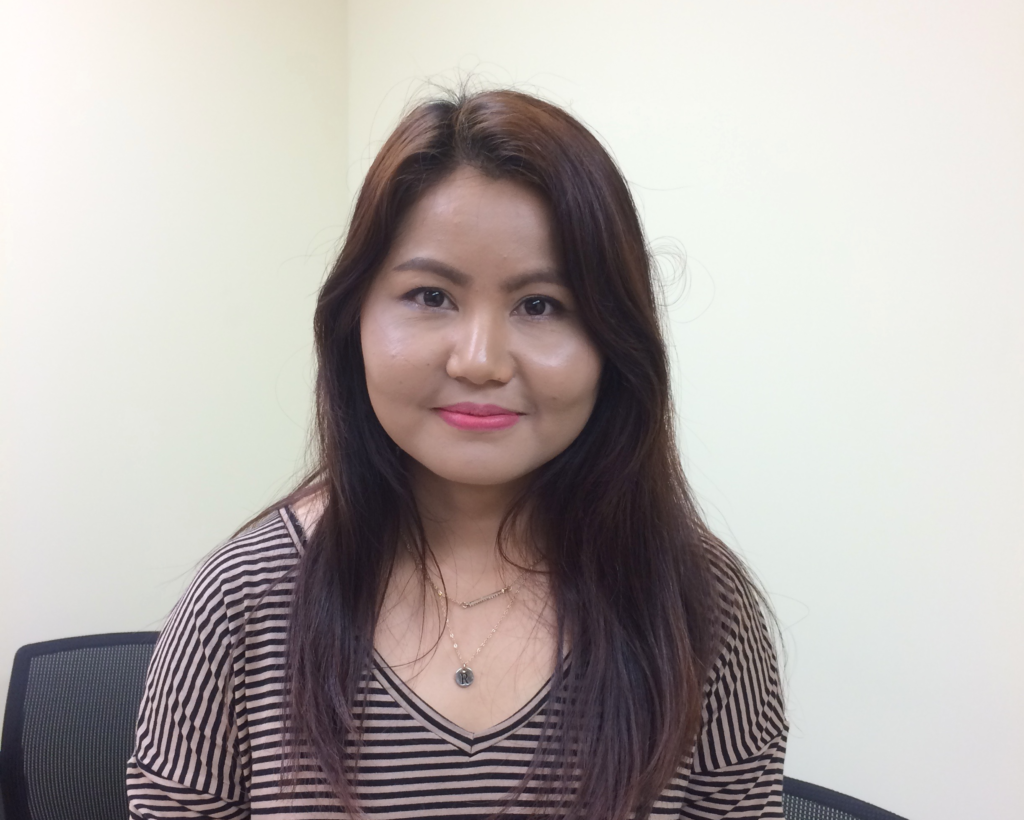 Eh Mwee is a bridge builder, though she looks too small to do that work. The bridges she builds reach from employers in Mower and Freeborn counties to Karen and Karenni refugees looking for jobs in their new home.
Eh Mwee is a bridge builder, though she looks too small to do that work. The bridges she builds reach from employers in Mower and Freeborn counties to Karen and Karenni refugees looking for jobs in their new home.
Eh Mwee grew up as one of those refugees, born in Burma but fleeing with her mother to a refugee camp in Thailand when she was just two months old. She was five when her mother died, and then lived with an adoptive family in the camp. Growing up without a home or country, she knew she wanted both – and more.
“When you live in a refugee camp,” Eh Mwee explains, “you don’t have a chance to go to college.” Refugees were restricted to the camp, not allowed to live or work outside the camp, and always considered illegal in the rest of the country. Their choices are to live and die inside the camp, to win resettlement in a third country, or to return to their home country. People of Karen and Karenni ethnicities still face persecution in Burma, so that was not an option.
Eh Mwee wanted more than a life behind fences. She wanted an education, a real home, even a car. She decided to seek resettlement. Waiting to turn 18, when she could apply for resettlement, she finished high school and studied English in the camp. Along with 250 others, she applied for one of 20 spots in the English Immersion Program, and got into the 10-month program.
Of the five languages she speaks, Eh Mwee says, English is the hardest.
Getting permission to come to the United States took years. Like all refugees who apply to enter the United States, she filled out applications, was interviewed by U.S. officials, waited for background checks and medical checks, and then had even more interviews. Finally, after 22 years in a refugee camp, she was approved for a U.S. visa.
Now 30, Eh Mwee has accomplished many of her dreams, including her first car, a job, and buying a home, where she lives with her husband and four-year-old daughter
At the Workforce Development Center, her job title is Karen Outreach and Job Search Instructor. She interprets, sits in on meetings with employers, finds resources, and helps her clients fill out forms and prepare resumes and applications.
Language is a barrier to success, so her interpreting is vital. She speaks Burmese and Thai, as well as two Karen languages – Po and Ska. Usually, she communicates with Karenni people in Burmese. Once a client is hired, she may go with them to the job orientation and help them to understand expectations and safety procedures.
Immigrants’ first goal is a job, she explains, and then a home. She says most Karen and Karenni immigrants are shy and quiet, and make good neighbors.
“We love being with friends and other family members. Usually we go to church together. On birthdays, we call it thanksgiving worship, not a party. We gather everyone together and eat together. We like being friends with others and we like to help each other a lot.”
Are “Operation Mega” raids on or off?
Minnesota braces for end to program for young immigrants
In Minnesota, young immigrants, businesses, leaders and advocates still pressing Congress to spare DACA program.
Trump is counting on Congress to save DACA. That’s an enormous gamble.
Trump killed DACA. Now he says Congress should resurrect it.
DACA Helpline
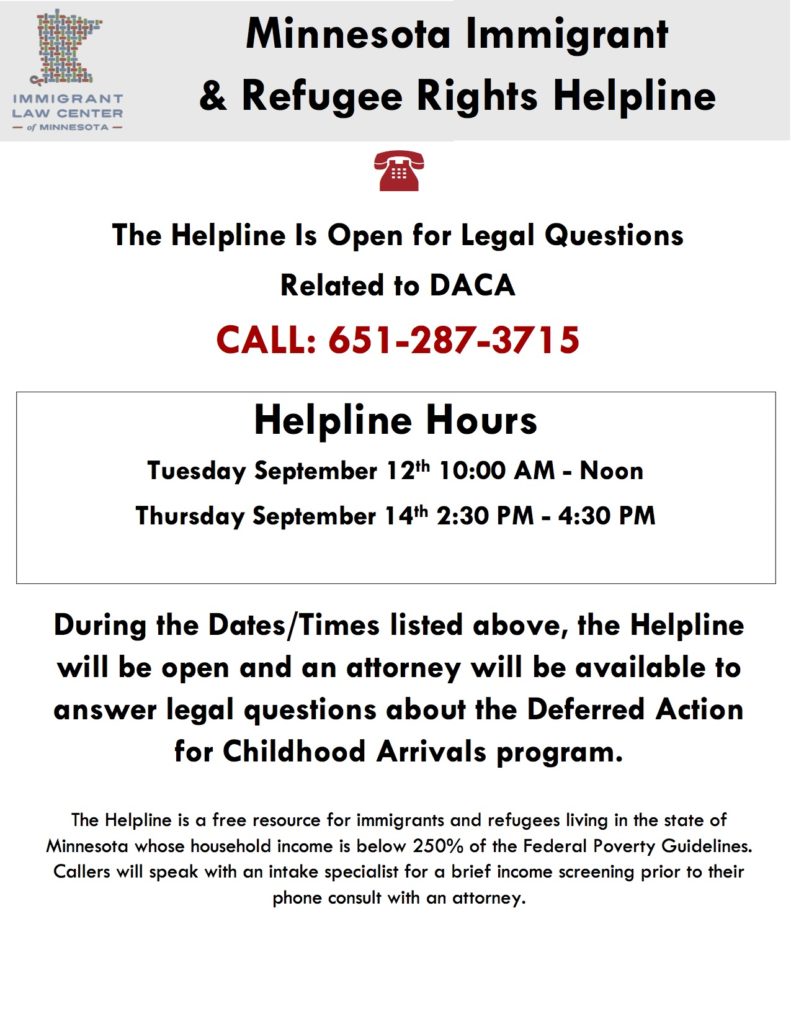
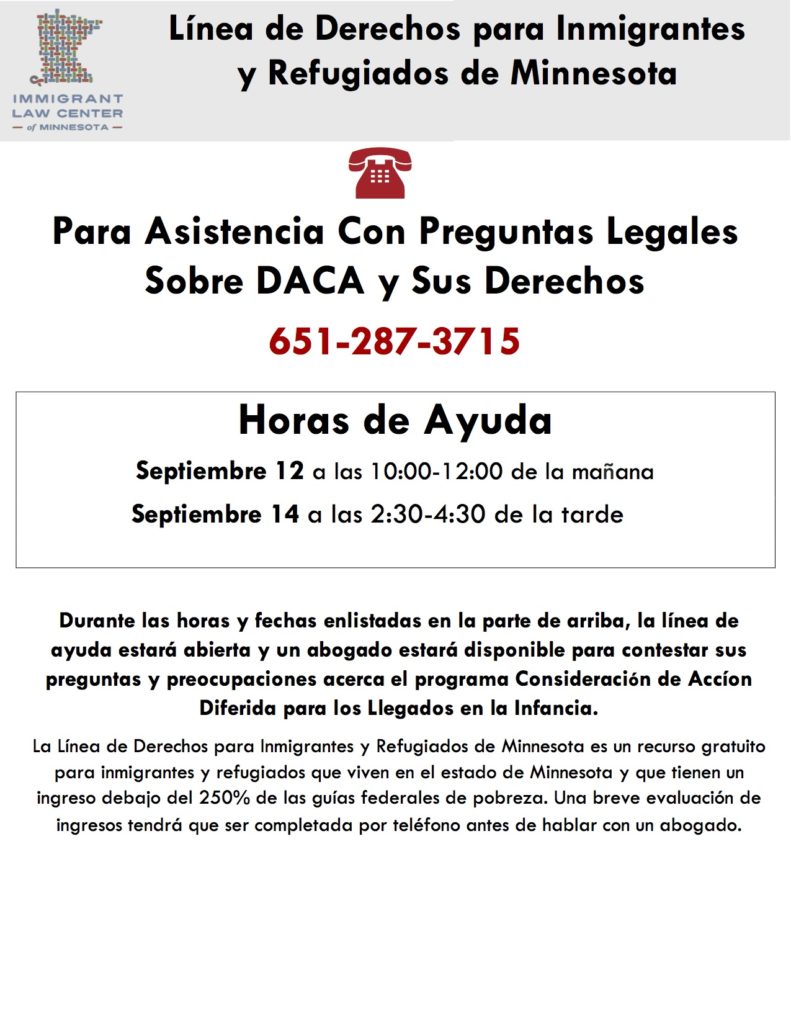 (Español abajo.) The helpline is open again this week! Minnesota immigrants and refugees with household income below 250% of the federal poverty guidelines can call for free legal consultation on DACA. Call 651-287-3715 from 10-noon on Tuesday and from 2:30-4:30 on Thursday. (Income screening will be done over the phone.)
(Español abajo.) The helpline is open again this week! Minnesota immigrants and refugees with household income below 250% of the federal poverty guidelines can call for free legal consultation on DACA. Call 651-287-3715 from 10-noon on Tuesday and from 2:30-4:30 on Thursday. (Income screening will be done over the phone.)
La linea de derechos para inmigrantes y refugiados estará abierta otra vez durante esta semana! Inmigrantes y refugiados que viven en el estado de Minnesota y que tienen un ingreso debajo del 250% de las guías federales de pobreza pueden llamar a la linea telefónica para una consulta (gratuita) relacionada con DACA. Llame a 651-287-3715 el martes entre la 10 de la mañana y el mediodía y el jueves entre las 2:30 y las 4:30 de la tarde. (Una evaluación de ingresos se tomará lugar por teléfono.)
A Tale of Two Citizens
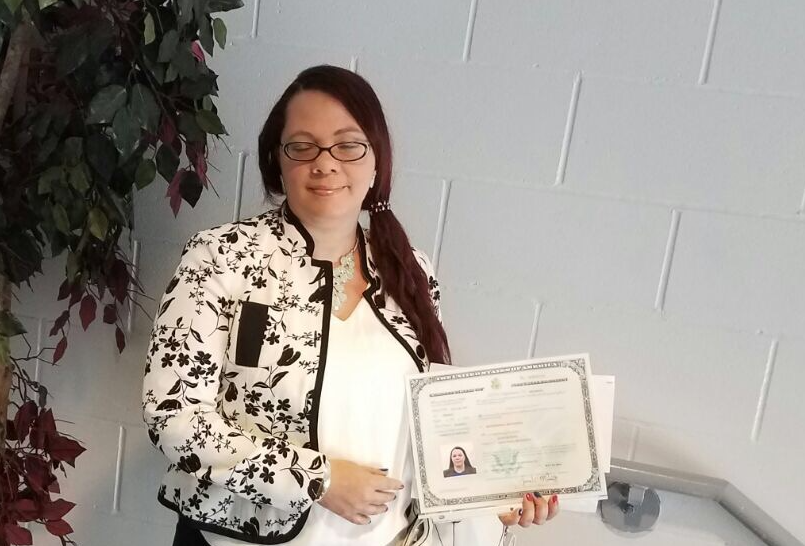
After traveling a long, hard, and costly road, Licette Peña Paulino became a U.S. citizen this year. She waited for almost a decade to get a visa. After becoming a permanent legal resident, she had to wait five years to apply. Application fees total $725 now. After applying she had to wait again – for processing of papers and background checks and scheduling the naturalization interview and tests.
Along the way, Licette got help with the application and test preparation from Graciela Gonzalez, her pro bono attorney with the Immigrant Law Center of Minnesota, who is also an immigrant. Licette said she is grateful to the Immigrant Law Center of Minnesota, whose staff and volunteers made her feel “very welcome and not afraid through the process of becoming a citizen.”
Many years ago, Licette’s parents applied for her visa under the family reunification provisions of current U.S. immigration law. Then they waited – her parents here and Licette in the Dominican Republic, where she was a medical doctor. She was eight months pregnant when she received her visa. Coming to the United States with her husband and two children in September 2010, she gave birth to their third child in October.
Without speaking English, everything seemed frightening at first. She started English classes in November 2010.
Though Licette was a medical doctor in the Dominican Republic, her Dominican medical education and credentials weren’t recognized here. She had to look for other work. She now works as a personal care attendant. When she explored nursing classes through a community college, the process seemed bureaucratic and complicated. She is now preparing to become a physician’s assistant.
Licette’s desire to come to the United States and become a citizen began with the stories of friends who had visited here. Her parents came to the United States in search of work and a better life. She wanted that for herself and her children, too.
Now that she is here, Licette says she appreciates the order and relative security of living where people follow the rules. She is also glad that when she works, she has the materials she needs for her work—something we often take for granted.
She and her father prepared for citizenship together. Besides learning English, they had to pass a citizenship test with questions on American government, history and civics. The application process is expensive, but she and her father qualified for pro bono assistance from the Immigrant Law Center of Minnesota. Graciela Gonzalez, her attorney. “was wonderful,” Licette said.
Graciela Gonzalez recounts a similar journey. She came to the United States from Argentina and earned her B.A. from the University of Minnesota with majors in English and political science. She began her career as a certified interpreter in federal and state courts, and in immigration courts. She also taught “Interpreting in Legal Settings” at the University of Minnesota for many years. After her children left home, she earned a law degree from the University of St. Thomas and now practices immigration and criminal law. She also volunteers pro bono services at the Legal Rights Center, a non-profit organization that represents, free of charge, indigent and low income criminal defendants.
Graciela said it gives her great joy to help immigrants like Licette find their way through the paperwork, interviews and tests required to become a U.S. citizen. Naturalization is a moment of great emotion, as an immigrant steps into a new identity without giving up their native culture. Becoming a U.S. citizen is a process of addition, not substitution or subtraction. Welcoming new citizens enriches the United States.
Thanks to Newell Searle, a volunteer for ILCM, for writing this article.
